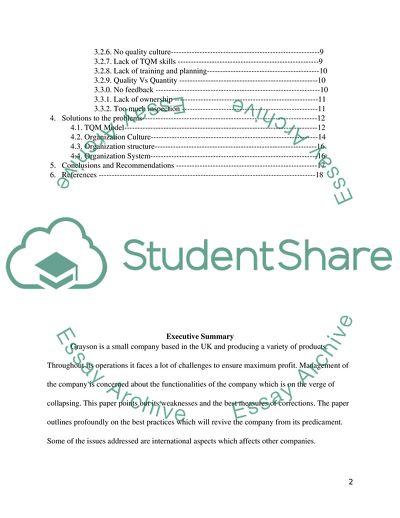Cite this document
(Weaknesses and the Best Measures of Corrections of Grayson Case Study Example | Topics and Well Written Essays - 3750 words, n.d.)
Weaknesses and the Best Measures of Corrections of Grayson Case Study Example | Topics and Well Written Essays - 3750 words. https://studentshare.org/engineering-and-construction/1809376-case-study-graysnos-manufacturing
Weaknesses and the Best Measures of Corrections of Grayson Case Study Example | Topics and Well Written Essays - 3750 words. https://studentshare.org/engineering-and-construction/1809376-case-study-graysnos-manufacturing
(Weaknesses and the Best Measures of Corrections of Grayson Case Study Example | Topics and Well Written Essays - 3750 Words)
Weaknesses and the Best Measures of Corrections of Grayson Case Study Example | Topics and Well Written Essays - 3750 Words. https://studentshare.org/engineering-and-construction/1809376-case-study-graysnos-manufacturing.
Weaknesses and the Best Measures of Corrections of Grayson Case Study Example | Topics and Well Written Essays - 3750 Words. https://studentshare.org/engineering-and-construction/1809376-case-study-graysnos-manufacturing.
“Weaknesses and the Best Measures of Corrections of Grayson Case Study Example | Topics and Well Written Essays - 3750 Words”. https://studentshare.org/engineering-and-construction/1809376-case-study-graysnos-manufacturing.


